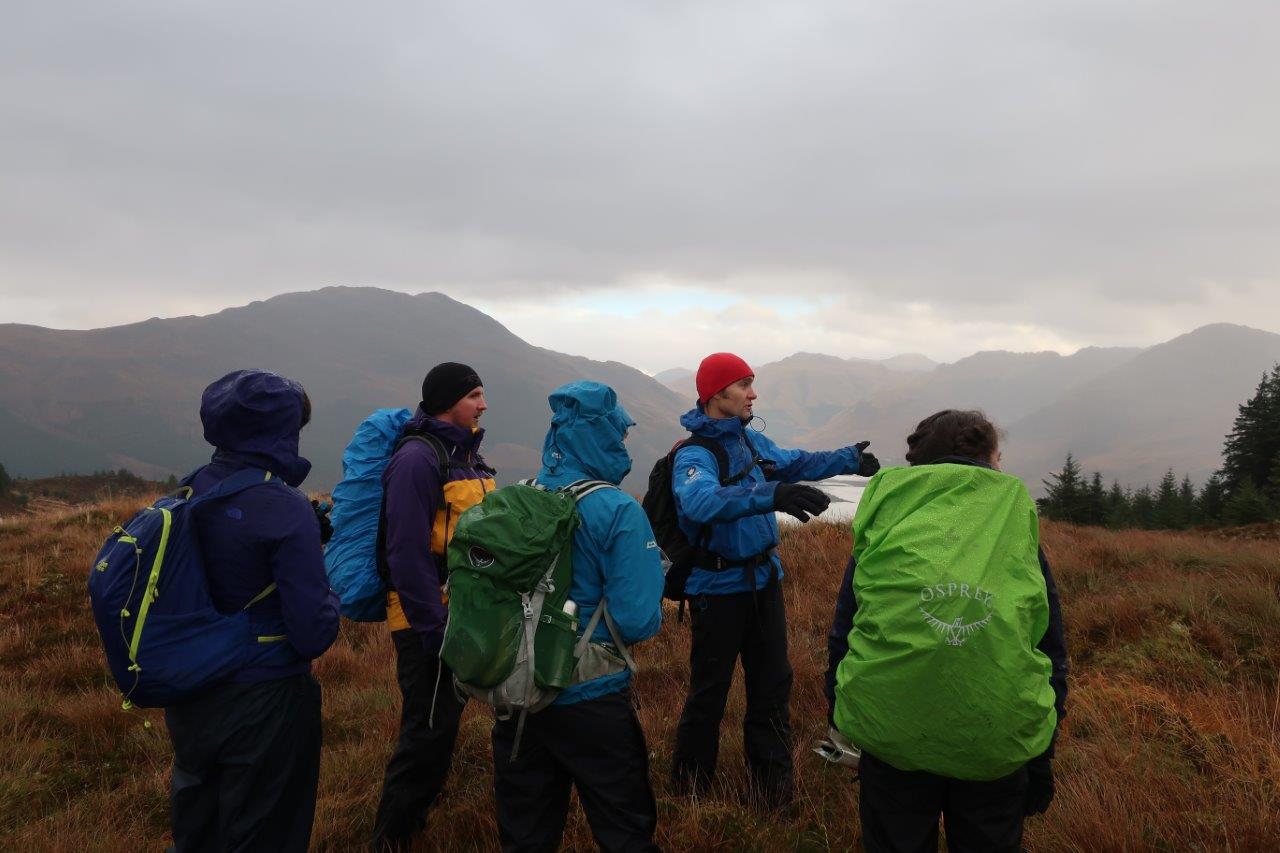Experience is key in the unforgiving environment of the Scottish mountains but it takes time to gain this invaluable commodity.
That’s why one project is helping to give young people a helping hand by sharing the knowledge gained over a lifetime spent in the hills by a professional mountaineering instructor.
Nick Carter is the St John Scotland mountain safety instructor and he has been working with student groups from across the country for the last three winters, giving their members a slice of his extensive experience.
I joined Nick earlier this month on a weekend meet with the Edinburgh University Hillwalking Club, who had based themselves at Kintail. While a number of groups headed off early from their base at Ratagan to bag as many Munros as they could – which is quite a few in that area – we met our small team who had signed up to receive the training from Nick.
Abbie, Emily, Peteris and Emma were getting this professional instruction for free thanks to funding from the charity St John Scotland, and Nick would be out with another group of students the next day too.
He had arrived in Kintail the day before and recced a route up the nearby Corbett, Sgurr Mhic Bharraich. Unlike many of the Munros, the way we were heading was pathless so it would require some good navigation from the start – the perfect chance to practise such skills.

The first task was to identify a contour feature and step onto the open hillside. On the way we looked at different maps, talked about the different scales used and the differences between the OS and Harvey maps, which are designed specifically for walkers.
Rather than leading the group from the front, Nick let the students take it in turns to plot a course to the next location and lead the way. We made our way up, finding a route through the rough terrain and hopefully choosing the easiest ground.
The 779m summit was reached via a complex ridge with the students picking up tips on the way. Nick focused his discussions on group management, as the students wanted to get involved in leading walks within their club, and the importance of concentration on navigation for all members of the group.
The mountain safety instructor post has been hosted by Mountaineering Scotland and funded by St John Scotland since 2015. It has received excellent feedback from students and Mountaineering Scotland describes it as a hugely valuable scheme under its popular mountain safety training programme.
CEO Stuart Younie said: “Promoting safety in the Scottish mountains is one of our core priorities and we are delighted to be continuing our successful partnership with St John Scotland.
“Students have traditionally been seen as a high-risk group, particularly as you may have young people with little or no previous experience joining a club at the start of their university year – just before winter sets in.
“Nick takes an innovative approach, going out to work directly with student clubs to provide them an opportunity to learn valuable new skills in a fun and accessible way. We hope many more students benefit from the experience of working with Nick and go on to enjoy the Scottish mountains while keeping themselves safe.”

At the summit of our Corbett, we talked about the importance of the descent and not “switching off” after reaching the day’s objective. We picked a route down through steep terrain, looking at footwork and group management again, to reach a path at Loch Coire nan Crogachan.
On the easier walk out via the ruin at Bealachasan – and an easy burn crossing – the students told me how beneficial the day had been. These are skills they, as future walk leaders at their club, will expand upon and share with other members.
St John Scotland said the mountain safety instructor scheme fits in with its charitable mission to save and enhance life. It has a close relationship with mountain rescue teams and will have donated more than £3.2 million by 2020, mostly on vehicles and bases for rescue volunteers.
The charity’s executive director Angus Loudon said: “The scheme has been very successful since it started three years ago. In the first season, training was offered only during the winter but in response to the demand for the training and the positive feedback from students, we were keen to expand it.
“Now Nick is leading training with groups every weekend from the autumn right through to springtime. We’ve been delighted to see the positive feedback from students who’ve benefited from the training and particularly to know that they find the opportunity to practice navigation skills especially valuable.”
The success of the scheme has led to it being funded for a further two years, allowing Nick to work with more student groups from around the country. Over the winter he will focus on crampon and ice axe skills as well as navigation and other elements that help keep people safe in the hills.
The long-term hope is that preventable mountain rescue incidents will be reduced and that more young people can safely enjoy time in the wonderful and wild high places of Scotland.
